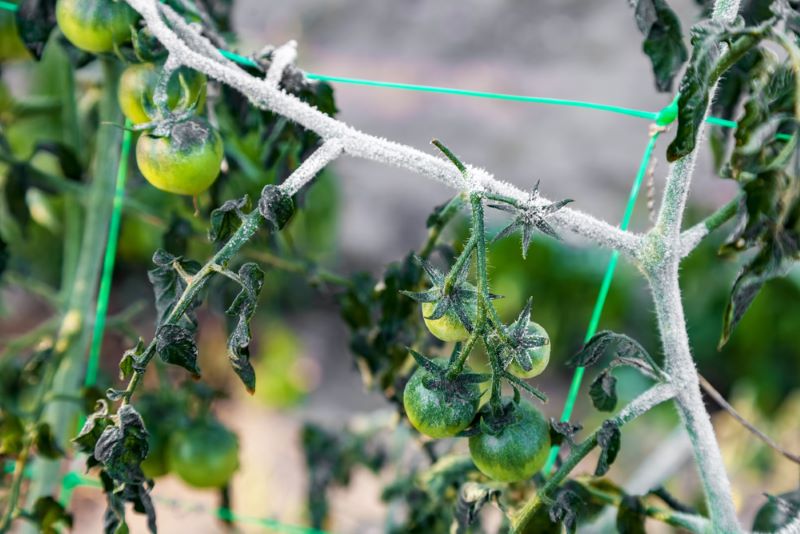
Enhancing plant resistance to abiotic stresses is a fairly important feature for the normal growth of high value crops, such as horticultural species.
Abiotic stresses (extreme temperatures, high salinity, drought, etc.) have a negative effect not only on yield, but also on the quality of the products produced, causing morphological, physiological and biochemical changes, significantly reducing their marketability.
According to several reports, extreme low temperatures reduce the metabolism of plants, while at the same time delaying physiological responses. Low metabolic rates as a result of cold stress lead to inhibition of photosystem II activity (photoinhibition). The effects of extreme low temperatures on plants include cell membrane injury.
Therefore, since environmental conditions cannot be controlled, different strategies are required at different levels through specialised agronomic tools such as biostimulants.
The use of biostimulants – Growth Regulators in agricultural practice influences a number of plant physiological processes, such as more efficient nutrient uptake, improved plant response to abiotic stresses, root system development and quantitative and qualitative improvement of the products produced.
The current academic understanding of how algal extracts, fulvic acids and amino acids affect abiotic stress reduction is based on the analysis of a complex network of molecular signals, activating biochemical and physiological processes. At the cellular level, inducible compounds such as proline, glycine and betaine stabilize proteins and cell structures, maintaining stable cellular water potential and absorbing free oxygen species (ROs). Therefore, through their antioxidant action, biostimulants ensure a protective role, which is further enhanced by their contribution to the generation of protective substances in cold conditions, increasing the thermostability of cell membranes (reduction of freezing injuries), etc.
According to various studies, plants to which biostimulants – growth regulators were applied showed additional:
- Increased photosynthetic activity (expression of genes related to the Rubisco process).
- Increased macronutrient and micronutrient content.
- Induction of biosynthesis of the growth hormones cytokinins (CKs) and auxins (IAA), acting antagonistically to stress hormones.
At the same time, soil pH is one of the main factors affecting plant growth, as well as the availability and assimilation of nutrients. Therefore, maintaining the pH at the desired values is one of the primary objectives of any rational fertilisation programme.
The availability of micronutrients in the root system of plants is influenced by a number of factors. Certain micronutrients are more difficult to assimilate under unfavourable conditions. Iron is the most common example. The use of the innovative chelating agent EDDHMA makes Iron available in a wide pH range (5-10), thus preventing the undesirable consequences of Iron deficiency.
For Phytothreptiki SA, innovation is a fundamental feature of its identity, developing products with a technological advantage.

The fertilizers of the BEST series, PGH technology, are the result of PHYTOTHREPTIKI’s effort to develop a water-soluble fertilizer that meets the “All in One” characterization.
High solubility, increased nutrient availability, low pH, presence of Bio-stimulants – Growth Regulators & Iron in the form of EDDHMA are some of the special features of BEST series.
The BEST range of PGH technology water soluble fertilizers are available in a variety of formulations to meet the fertilizer requirements of all crops at all stages of their growth. They are applied both by the hydrofertilisation method and by the inter-foliar fertilisation method. At the same time, the specialised selection of raw materials results in BEST fertilisers being low in salinity, which makes them ideal for soils with high electrical conductivity.

